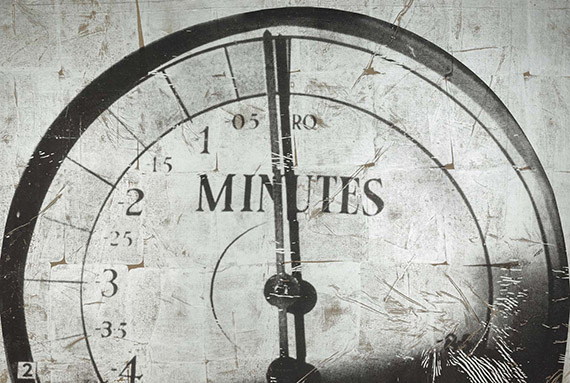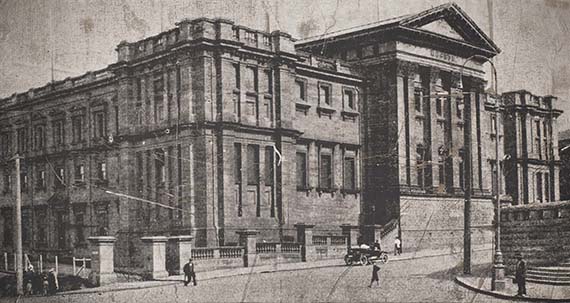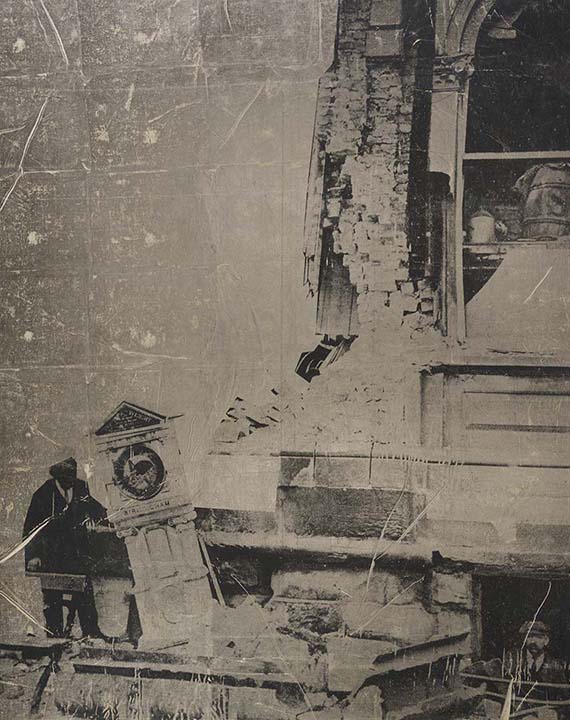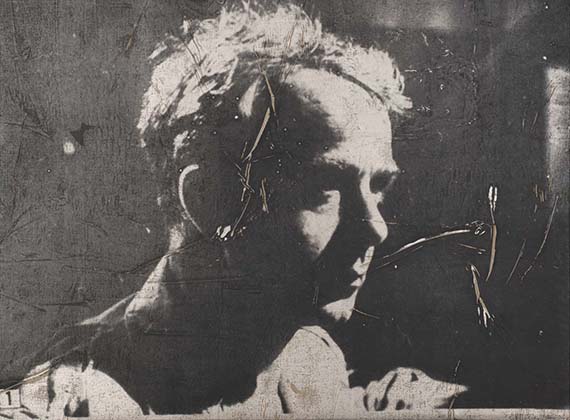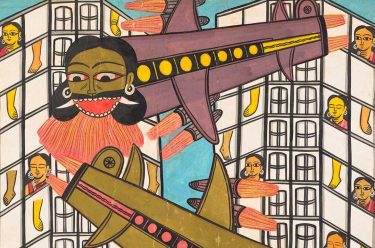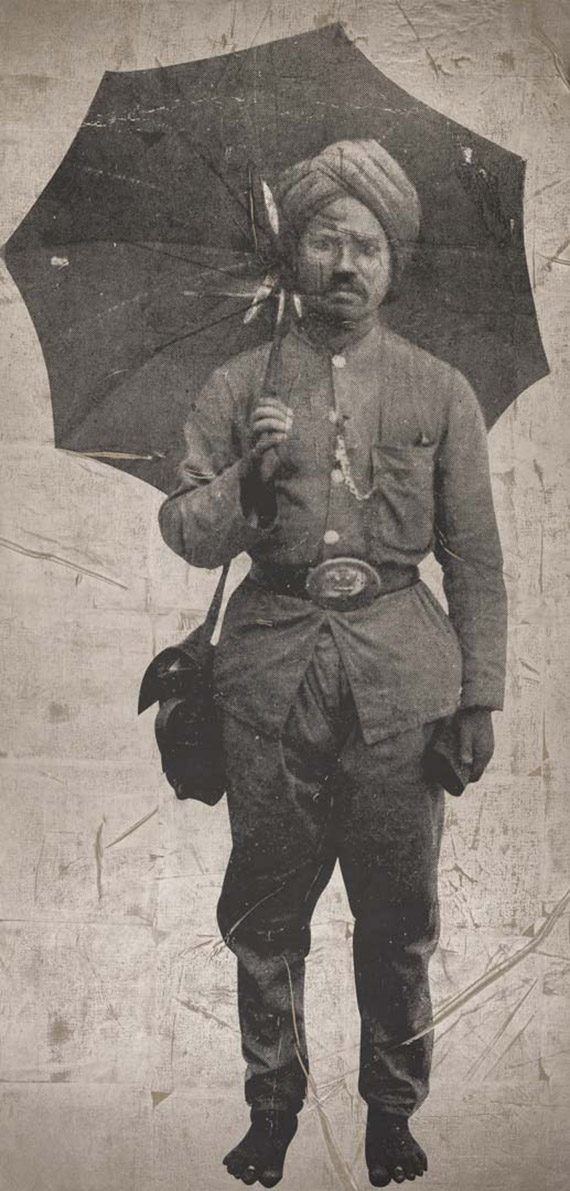
Brook Andrew is a leading Australian contemporary artist who over the past 20 years has developed an interdisciplinary practice that encompasses photography, printmaking, sculpture, sound and installation. His work has consistently engaged with and elaborated on the potent themes of colonialism and post-colonialism, cultural difference, sexuality, the role of language in determining historical and contemporary identities, and the circulation and contextualisation of anthropological and sociological imagery.
TIME 2012 is an imposing installation of six images sourced from archives and reproduced in large-scale onto Belgian linen with a surface treatment of metallic foil. The installation assembles historical colonial, imperialist and scientific imagery from diverse points of origin around the world, a strategy through which Andrew seeks to link Australian Aboriginal histories and experiences to those of other peoples. TIME demands a reconsideration of the impact of European settlement and the displacement of Australia’s original inhabitants and traditional owners through a wider geopolitical lens.
The installation includes one image with a direct Indigenous reference: an Aboriginal man painted up with a Union Jack — the mark of empire — on his chest. A detail from a group photograph, the figure is emblematic of the colonised Aborigine, engaged in ‘corroboree’ — a put-on performance far removed from ceremony — for white audiences. Other images include an Indian postal worker, people among the rubble of a collapsed building, an image of a clock counting backward toward a zero hour (a reference to the British atomic bomb tests in the Monte Bello Islands and Maralinga in 1952–63), and the Australian Museum — the institutional repository of Indigenous and non-Indigenous material culture and classificatory systems. Each work is speculatively connected to the other through signs of time: each image, taken from the artist’s own collection of historical photographs, postcards and slides, re-presents a moment or situation in history. Andrew’s juxtaposition of disparate pictures constructs an open-ended narrative that provokes questions regarding the fragile, volatile political, social and environmental systems that structure our contemporary world.

Andrew’s use and deployment of archival sources is a powerful strategy: historical photographic sources increasingly acquire the status of artefacts in a digital age. Andrew’s extensive research into historical image archives and anthropological collections, in addition to his own collection of rare books, press photographs and postcards, has provided a diverse range of material on which to draw. Installed, the images in TIME establish an ambiguous space, suspended between image and object, one that takes on a ‘theatrical mise en scene or the stage of a museum diorama’.1 Their enlargement to monumental dimensions also radically alters their original status as documents while the added surface treatment emphasises the historical patina of the original source imagery, drawing attention to a tone of remembrance. As Anneke Jaspers comments,
Summoned into this unlikely dialogue from disparate sources, the subjects in TIME give form to the idea of the archive as a space in which multiple realities can coincide, beyond the constraints of linear time and literal distance.2
As an installation, TIME engages with layered historical, cultural perspectives that invoke the political complexities and ramifications of colonial history, and directly activate a contemporary experience of time: the past is mediated to play out differently in the immediacy of the present. In his manipulation of images and reconfiguration of them in other media and formats, Andrew attempts to disconnect his works from the conventional narrative realm of the photograph, but simultaneously activate his viewers through a physical and psychological absorption in his subjects and their alternatively subtle or strident occupation of space.
Text by Jason Smith, former Curatorial Manager, Australian Art, QAGOMA, with thanks to David Burnett, former Curator, International Art, and Bruce McLean, former Curator, Indigenous Australian Art for their initial research into TIME.
Endnotes
1 Anneke Jaspers, ‘Brook Andrew: The predicament of archival images’, in The Floating Eye [exhibition catalogue], Sydney Pavilion at the 9th Shanghai Biennale 2012, unpaginated.
2 Jaspers.
Subscribe to QAGOMA YouTube to go behind-the-scenes / Hear artists tell their stories / Read more about your Collection
Feature image: Brook Andrew TIME I 2012
#QAGOMA
